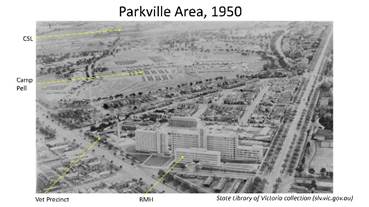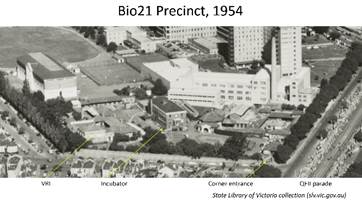Bio21 Guest Message: Matt Hardy, CSL – Parkville History Essay - 5 November 2020
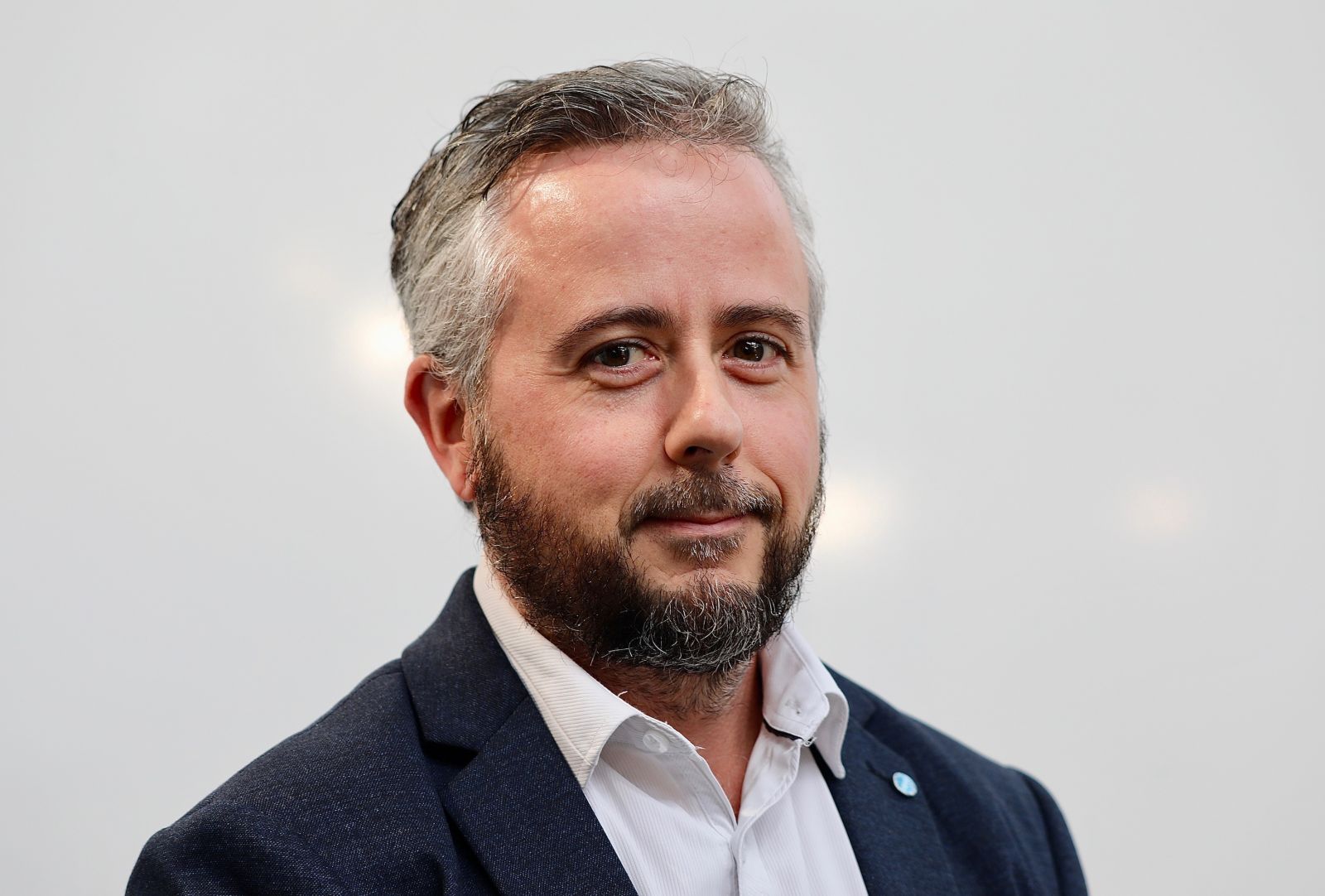 As we go about our daily working lives in the David Pennington, Nancy Millis and (more recently) the Ruth Bishop buildings, it is worthwhile to pause and reflect on the fact that these buildings lie on a site and within a wider area that has not always been devoted to cutting-edge biotechnology. Indeed, the “Welcome to Country” said at the start of Bio21 events should continually remind us that until the mid-19th century and for thousands of years before that, the Parkville precinct had been in continual use by the Woi wurrung people as a camping ground and for Corroborees with the neighbouring Boon wurrung, Wathaurong and Taungurong peoples, with known sites within Royal Park and on either side of Sydney Road.
As we go about our daily working lives in the David Pennington, Nancy Millis and (more recently) the Ruth Bishop buildings, it is worthwhile to pause and reflect on the fact that these buildings lie on a site and within a wider area that has not always been devoted to cutting-edge biotechnology. Indeed, the “Welcome to Country” said at the start of Bio21 events should continually remind us that until the mid-19th century and for thousands of years before that, the Parkville precinct had been in continual use by the Woi wurrung people as a camping ground and for Corroborees with the neighbouring Boon wurrung, Wathaurong and Taungurong peoples, with known sites within Royal Park and on either side of Sydney Road.
Following the arrival of Batman and Fawkner to the Port Phillip District in 1835 from Van Diemen’s Land, what is now Parkville remained generally undisturbed until 1850 when Superintendent Charles J La Trobe outlined a far-reaching policy of retaining land close to Melbourne for the “recreation and amusement” of the people. This originally included a much larger swathe of land, 2,560 acres in fact, than the current boundary of Royal Park and as one would expect, this land has been nibbled away over the years for uses such as the Zoo (est. 1862), the Parkville CSL site (formally a model farm), a golf course and the Royal Children’s Hospital (site est. 1948; opened 1962).
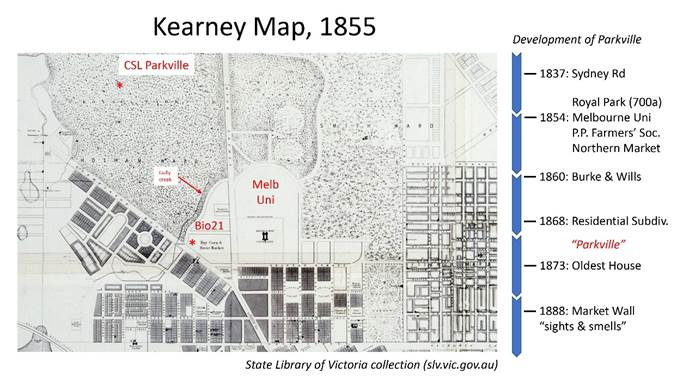
Closer to home, the triangle of land bounded by Flemington Road, Park Drive (actually fronting Royal Park originally) and Royal Parade was alienated by the mid-1850s with the southern section retained as a reservation for a Hay, Corn, Horse and Pig Market, operating in various capacities from 1855 through to 1939. All are now gone. The Victorian Comprehensive Cancer Centre (VCCC) building lies over the former Dental School (1963-2003) which itself occupies the site of the original Haymarket (demolished 1954); University High (1929) and the WEHI occupy the Horse Market site, and the Pig Market was repurposed in 1943 as the Royal Melbourne Hospital once it outgrew its central Melbourne location. However, tantalising hints of the former use of the market remains in the form of the Northern Market Wall originally surrounding the entire market site. As one could imagine, local residents did not take kindly to the “sights and smells” of the livestock held in the market and succeeded in getting the market wall built in 1888. It is now the most impressive surviving example of a 19th century civic wall in the state.
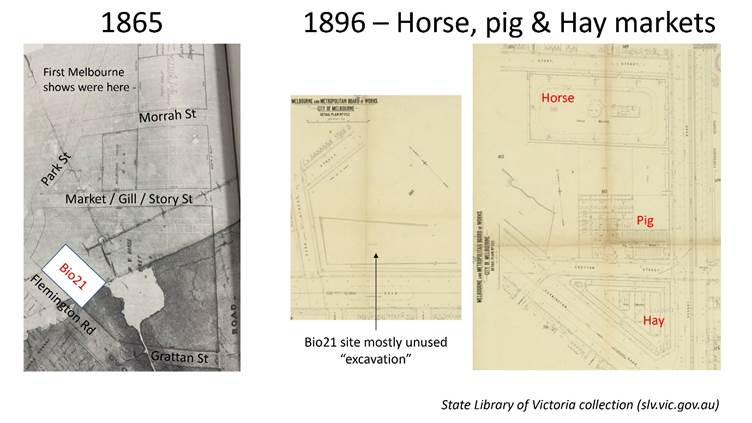
The section of land north of Story Street is now the fashionable suburb of South Parkville with a wide array of architectural styles, but even there, the Port Phillip Farmer’s Society conducted shows until 1870 on land between Morrah and Bayles Streets before the shows eventually moved to the more familiar Showgrounds in Ascot Vale.
The agricultural flavour of the Parkville precinct has not disappeared. In 1909 an Act of Parliament (no. 2174) resulted in the establishment of the University Veterinary School on the relatively unused section of the Northern Market grounds where the Bio21 Institute as a whole now stands. Not much remains of these early buildings, with the magnificent Federation-style Veterinary Research Institute (VRI) building constructed in 1910 being the sole exception.
|
|
|
Fast-forward now to the 21st century and the rate of progress has been astonishing with 20 years of building activity rendering the site almost unrecognisable. The construction of the David Pennington building (2005) has been followed by the Nancy Millis building (2018) and now the Ruth Bishop building (2020). Surrounding this are a profusion of new and renovated facilities, the Victorian Comprehensive Cancer Centre, Walter and Eliza Hall Institute, Royal Melbourne Hospital and the Royal Children’s Hospital to name but a few. The future of the Parkville precinct is bright.
Matt Hardy
Senior Scientist
CSL Research

